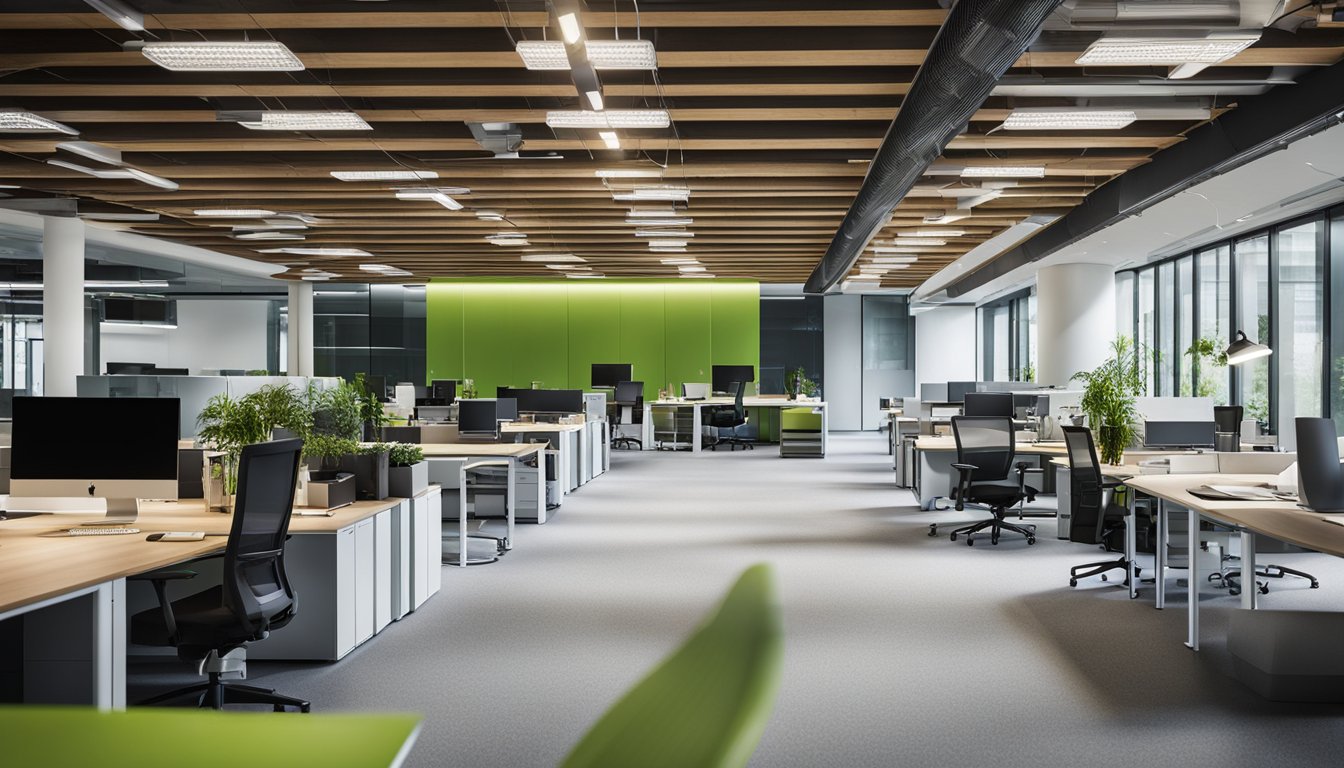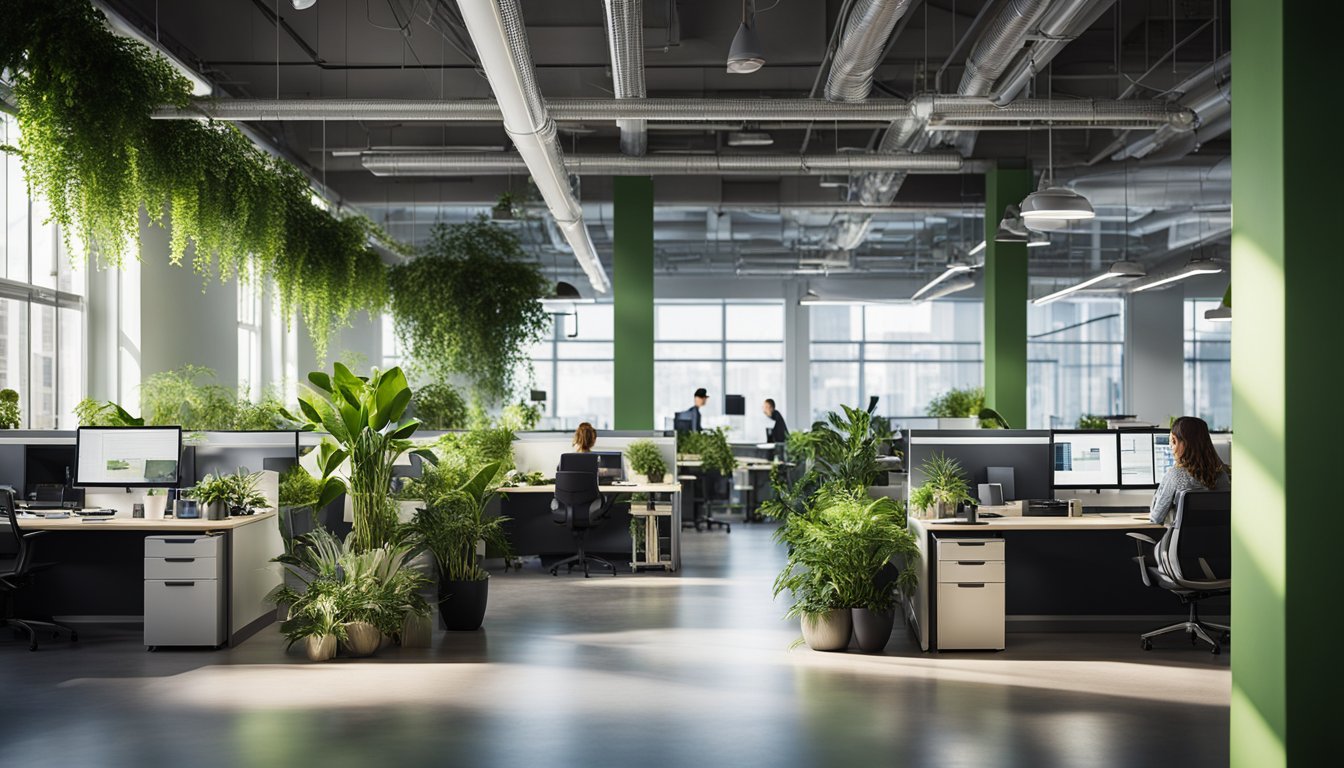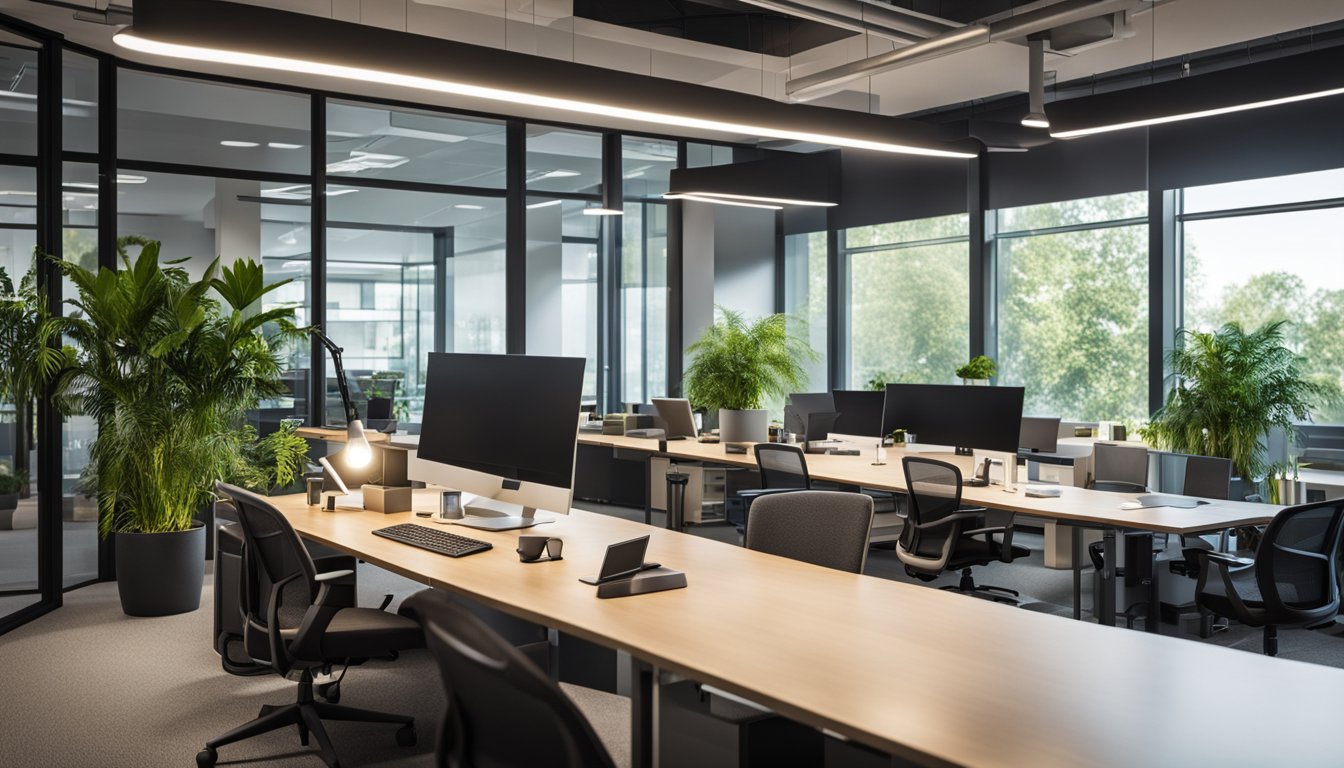Late updated: 08 Nov 2024 12:11
Written by: Amber Collins
Green Office Lighting Solutions for UK Businesses: Enhancing Efficiency and Sustainability
In a world increasingly focused on sustainability, the importance of green office lighting solutions for UK businesses cannot be overstated. Transitioning to eco-friendly lighting is not just a move towards environmental responsibility but also a strategic decision that can lead to significant energy savings. UK businesses can reduce their carbon footprint and achieve their reduction targets through the implementation of efficient lighting technologies like LED systems.

Every day, more companies are recognising the dual benefits of sustainable lighting. Not only do these solutions contribute positively to the environment, but they also enhance productivity and office ambience. With advanced technologies, businesses can now create a workspace that meets both functional needs and eco-conscious standards.
For businesses aiming to transform their lighting strategies, understanding available options and implementation approaches are crucial. Our exploration into green office lighting reveals practical strategies and addresses common questions, helping businesses make informed decisions and guide their journey towards a greener future.
Key Takeaways
- Green lighting improves both sustainability and productivity.
- Eco-friendly lighting solutions offer significant energy savings.
- Strategic implementation helps meet carbon reduction targets.
The Impact of Lighting on Office Productivity and Efficiency

Effective lighting solutions are central to creating a productive and energy-efficient office environment. By optimising the use of energy-efficient lighting, such as LED systems, we can significantly enhance both employee productivity and operational cost savings.
Understanding the Role of LED Lighting in Energy Efficiency
LED lighting has revolutionised the way we think about energy-efficient lighting in the workplace. Unlike traditional lighting, LEDs consume far less energy while maintaining excellent light quality. LEDs can reduce energy consumption by up to 75% compared to incandescent bulbs. This translates into notable energy savings, making them a sustainable choice for businesses aiming to cut costs and reduce their carbon footprint.
Moreover, LEDs have a longer lifespan, reducing the frequency and cost of replacements. This durability ensures a more consistent lighting quality, which helps maintain employees' focus and productivity. Additionally, by integrating smart lighting systems, we can automate light usage based on occupancy, further boosting energy efficiency without compromising on lighting quality.
Evaluating the Financial Benefits of Energy-Efficient Lighting Systems
Investing in energy-efficient lighting systems presents significant financial advantages. Implementing solutions, like LED lighting paired with smart controls, can lead to considerable reductions in energy costs. Estimates suggest businesses can achieve up to 50% savings on lighting costs when switching to energy-efficient options.
These cost savings are not just immediate but also long-term as the decreased energy consumption and reduced maintenance needs lower overall operational expenses. Furthermore, government incentives and tax breaks for energy efficiency projects can further diminish upfront costs. For us, the financial benefits underscore the importance of adopting efficient lighting systems not just for cost savings, but also for sustainable business practices.
Strategies for Implementing Green Office Lighting Solutions

Incorporating eco-conscious lighting can reduce energy consumption, cut costs, and enhance the workplace's sustainability credentials, while also boosting employee well-being.
Selecting the Right LED Office Lighting Products
Choosing the appropriate LED products is essential to creating a sustainable lighting system.
LED lights, known for their energy efficiency and longevity, are often the best choice for commercial spaces. We should assess the specific lighting needs of the office, such as the desired brightness and colour temperature. Some spaces may require adjustable lights to cater to various tasks and activities.
Working closely with lighting design experts can ensure tailored solutions that meet both aesthetic and functional needs. Additionally, opting for low maintenance and high durability products will further enhance cost savings and sustainability benefits.
Incorporating Eco-Friendly Office Supplies
Sustainable practices go beyond just lighting; integrating eco-friendly office supplies is another effective strategy.
Using items like recycled paper and refillable pens can lessen environmental impact. When combined with energy-efficient lighting, these choices contribute significantly to a greener office environment.
We should align our purchasing policies with sustainable goals and prioritise suppliers who share our commitment to environmental responsibility. By fostering an office culture that emphasises social responsibility, we not only reduce waste but also promote a greener future.
Reducing Carbon Footprint with Sustainable Lighting Practices
Implementing sustainable lighting practices significantly reduces the office's carbon emissions. Motion sensors and smart systems can automatically adjust lighting based on occupancy and natural light levels, conserving energy.
Exterior lighting solutions, such as solar-powered lights, can further cut energy use. Ongoing lighting maintenance is crucial for optimal performance and energy efficiency.
Regular assessments allow us to address any inefficiencies promptly, maintaining a sustainable lighting environment. Through these actions, we demonstrate our commitment to reducing our carbon footprint and enhancing our corporate social responsibility initiatives.
Frequently Asked Questions

Exploring green lighting solutions can greatly impact cost savings, energy efficiency, and employee well-being. We address common queries regarding eco-friendly lighting options, energy-saving strategies, and compliance with UK regulations.
What are the most cost-effective eco-friendly lighting options for UK offices?
Businesses can opt for LED lights as they offer significant energy savings and have a longer lifespan compared to traditional lighting. This reduces replacement costs and consumption in the long run. Additionally, motion-sensor lighting systems and smart controls can further enhance cost-effectiveness.
How can businesses improve energy efficiency with their office lighting?
Implementing daylight harvesting and sensors helps optimise natural light usage, reducing dependency on artificial lighting. Smart lighting systems, which adjust based on occupancy and daylight availability, also contribute to efficient energy usage.
What are the benefits of LED lighting in a professional setting?
LED lighting is energy-efficient, reducing energy bills and carbon footprint. It provides consistent and high-quality light, improving visibility and reducing eye strain. Furthermore, LEDs have a longer lifecycle, leading to fewer replacements and reduced maintenance effort.
How does lighting design impact employee wellbeing and productivity in the workplace?
Proper lighting design enhances employee comfort, reduces fatigue, and can positively affect mood and productivity. Natural light and adjustable lighting levels help create a pleasant work environment, which can improve focus and decrease errors.
What are the lighting regulations that UK businesses need to comply with for office spaces?
UK businesses need to adhere to regulations covering energy efficiency, such as the Energy Performance of Buildings Directive, and ensure compliance with workplace safety standards for lighting levels. These regulations ensure a balance between safety, efficiency, and minimal environmental impact.
What steps can a business take to conduct a sustainable lighting audit?
Conducting a lighting audit involves assessing current lighting systems, identifying inefficiencies, and proposing improvements. This includes analysing energy consumption, ballast types, and controls. The audit provides actionable insights into upgrading systems to more sustainable solutions.
